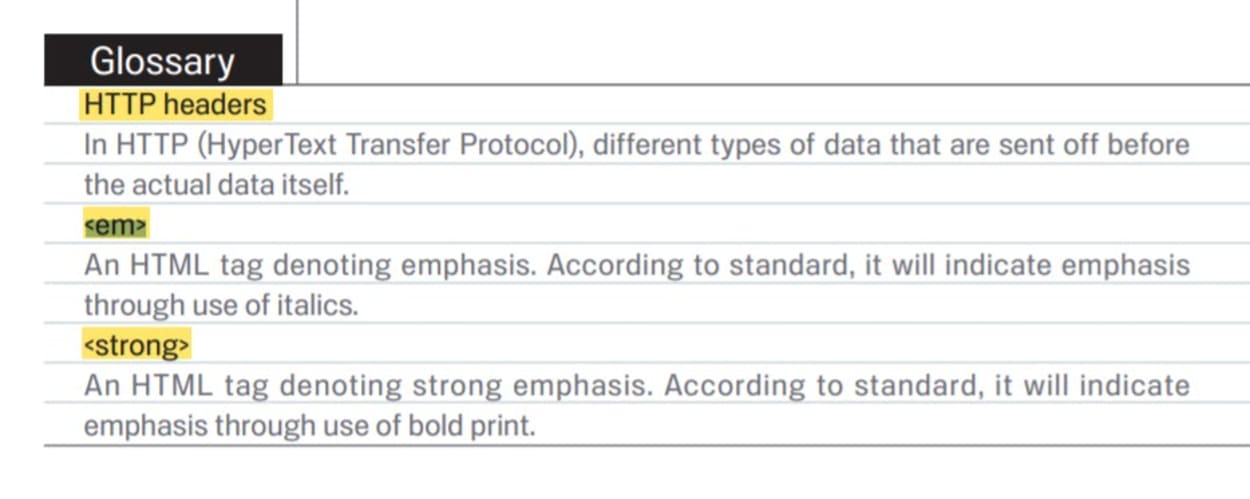A Patent registered in 2014 indicated that Google considers larger fonts, boldening, or italicized text (formatted words) when assessing the page’s relevance to the users’ search query.
The more relevant your content is to the search query, the more likely you will rank for that term in the SERPs.
Will using formatted words improve your Google rankings?
Google determines the relevance of your page to particular queries in several ways.
Formatted words should help where your content’s main subject is unclear. However, I doubt they would elevate otherwise good quality content that already shows it is highly relevant.
Let’s take an in-depth look at what the Googlers \ Experts had to say:
Larger fonts, bold text, or italic text may be a Google Ranking Factor
A US Patent filed in April 2012 (Patent US 8818982 B1 (Granted Aug 2014)), and granted in August 2014, relates to how Google might use formatted words such as bold or italic text to determine the Information Retrieval (IR) score.
The IR score is, in simple terms, a method for determining the relevance of the documents to specific queries. As such, documents with higher IR scores may rank better for those terms.
The IR score applies to formatted words and a word’s position on a page. For example, it may give footer text less weighting.
Concerning the Information Retrieval score (a measure of how relevant a document is to a search query), the Patent says:
To return the “best” results of a search, it is important to measure, in some fashion, the quality of documents, such as web documents. One existing document quality measurement technique calculates an Information Retrieval (IR) score that is a measure of how relevant a document is to a search query.
The IR score can be weighted in various ways. For example, matches in a document’s title might be weighted more than matches in a footer. Similarly, matches in text that is of larger font or bolded or italicized may be weighted more than matches in normal text.
A document’s IR score may be influenced in other ways. For example, a document matching all of the terms of the search query may receive a higher score than a document matching one of the terms. All of these factors can be combined in some manner to generate an IR score for a document that may be used in determining a quality of the results from an executed search.
Is there a difference between the "strong" / "b" and "em" / "i" tags in terms of SEO?
Although <em> / <i> and <strong> / <b> are each the same, respectively italicizing or bolding text, there are some important difference:
- <b> and <i> are used to define bold and italic text without adding extra importance. They exist purely to style the text and nothing more.
- <em> is used to emphasize text, but also adds semantic emphasis.
- <strong> is also used to emphasize text, adding “strong” importance.
Despite the semantic differences, there may not be any differences for SEO purposes.
In a video, Matt Cutts reiterated advice provide back in 2006, where he said that their is no difference between “strong” and “b”, or “i” and “em”. One note of caution is that he said things might have changed since 2006, but “I really kind of doubt it.”
Google’s Starter Guide states that italics and bold denote emphasis.
The Google SEO starter guide states the following:
- <em> - An HTML tag denoting emphasis. According to the guide, it will indicate emphasis through italics.
- <strong> - An HTML tag denoting strong emphasis. According to the guide, it will indicate emphasis through bold print.
A screenshot of the relevant part of the guide is below:

The fact that they are mentioned explicitly in the starter guide indicates some importance.
Formatted Words FAQ
What are formatted words?
There are a number of HTML elements that format text:
<b> Bold text </b>
<strong> Important text </strong>
<i> Italic text </i>
<em> Emphasized text </em>
<mark> Marked text </mark>
<small> Small text </small>
<del> Deleted text </del>
<ins> Inserted text </ins>
<sub> Subscript text </sub>
<sup> Superscript text </sup>- <b> Bold text
- <strong> - Important text
- <i> - Italic text
- <em> - Emphasized text
- <mark> - Marked text
- <small> - Small text
- <del> -
Deleted text - <ins> - Inserted text
- <sub> - Subscript text
- <sup> - Superscript text
You can find a list of some other text level formatting here.
The Google SEO starter guide only comments on the most common HTML formatting elements, namely “strong” and “em”:
- <em> - “An HTML tag denoting emphasis. According to standard, it will indicate emphasis through the use of italics.”
- <strong> - “An HTML tag denoting strong emphasis. According to standard, it will indicate emphasis through the use of bold print.”
A Google Patent (which I discuss further below) includes font size in the same list as “em” and “strong”.
<span style="font-size:20px">Font size on a px or em basis</span>- Font size on a px or em basis
It is unclear whether HTML formatting influences rankings, such as marked text, subscript, superscript, or even font color. As such only formatted text expressly mentioned by Google forms part of our conclusions.
